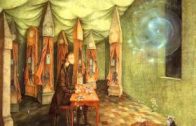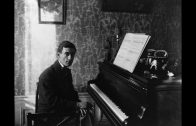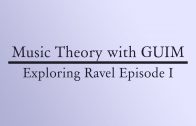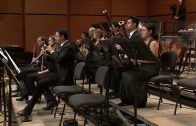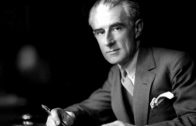Maurice Ravel – Daybreak (Daphnis et Chloé)
Daphnis et Chloé is a ballet with music by Maurice Ravel. Ravel described it as a “symphonie choréographique” (choreographic symphony). The scenario was adapted by Michel Fokine from an eponymous romance by the Greek writer Longus thought to date from around the 2nd century AD. Scott Goddard published a contemporary commentary that discussed the changes to the story that Fokine made to prepare a workable ballet scenario.The story concerns the love between the goatherd Daphnis and the shepherdess Chloé. The ballet is in one act and three scenes.
Ravel began work on the score in 1909 after a commission from Sergei Diaghilev. It was premiered at the Théâtre du Châtelet in Paris by his Ballets Russes on June 8, 1912. The orchestra was conducted by Pierre Monteux, the choreography was by Michel Fokine, and Vaslav Nijinsky and Tamara Karsavina danced the parts of Daphnis and Chloe. Léon Bakst designed the original sets.
The work is written for a large orchestra consisting of piccolo, 2 flutes (2nd flute also doubling piccolo), alto flute, 2 oboes, English horn, E-flat clarinet, 2 clarinets, bass clarinet, 3 bassoons, contrabassoon, 4 horns, 4 trumpets, 3 trombones, tuba, timpani, tam-tam, wind machine, triangle, bass drum, field drum, castanets, tambourine, celesta, crotales, glockenspiel, 2 harps, wordless choir and strings in eight parts.When Diaghilev took the ballet to London in 1914, he omitted the chorus, which prompted Ravel to send an angry letter to The Times newspaper (see editions of June 9, 10 and 17).
At almost an hour long, Daphnis et Chloé is Ravel’s longest work. In spite of the ballet’s time length, a small number of musical leitmotifs gives musical unity to the score.The music, some of the composer’s most passionate, is widely regarded as some of Ravel’s best, with extraordinarily lush harmonies typical of the impressionist movement in music. Even during the composer’s lifetime, contemporary commentators described this ballet as his masterpiece for orchestra.He extracted music from the ballet to make two orchestral suites, which can be performed with or without the chorus. The second of the suites, which includes much of the last part of the ballet and concludes with the “Danse generale”, is particularly popular. When the complete work is itself performed live, it is more often in concerts than in staged productions.
Performed by:Philharmonia Orchestra
Conductor:Geoffrey Simon
Artwork :Remedios Varo “Revelation or The Clockmaker”.
